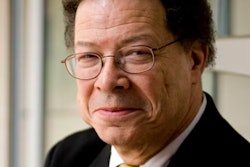Naomi Osaka and Simone Biles may have moved society closer to being comfortable talking about mental health in young people. In spite of the tremendous amount of criticism they received, neither woman backed down in their insistence that they needed to take time off from their sports to focus on their own well-being.
And we may see many more 20-somethings doing the same as they return to in-person learning amid the pressures of a still-ravaging global pandemic, still-unresolved racial tensions that include government battles over what version of history can be taught in schools, another historic year for hurricanes and natural disasters, and the familial and external strains that exist even in years where the entire world is not upside down.
 Kristelle Aisaka
Kristelle Aisaka
“I think we know that whether it’s from things like Covid in the last year-and-a-half just being more stressful, or it’s also some of this increased visibility and de-stigmatization of mental health things … we’re seeing a lot more students who are self-advocates for more mental health services on campus,” Aisaka says.
In some cases, students are formally looking to access therapy programs, but sometimes drop-in programs or check-ins from their favorite professors are more the type of help they’re ready to receive.
“I keep going back to [the idea] that school administrators need to lead with compassion. That has to be first and foremost when it comes to students this semester,” says Diana Cusumano, director of JED’s campus and wellness initiatives. “Everyone’s going to feel different. … We’re all under such trauma. Losing loved ones, altered experiences. Even if people think all the remote work and the impacts of the pandemic haven’t affected them, I can tell you it’s affected them.”
Dr. Annelle Primm, senior medical director at the Steve Fund, says the impact of these issues may be exacerbated for Black students and other students of color, who often “suffer in silence.”















